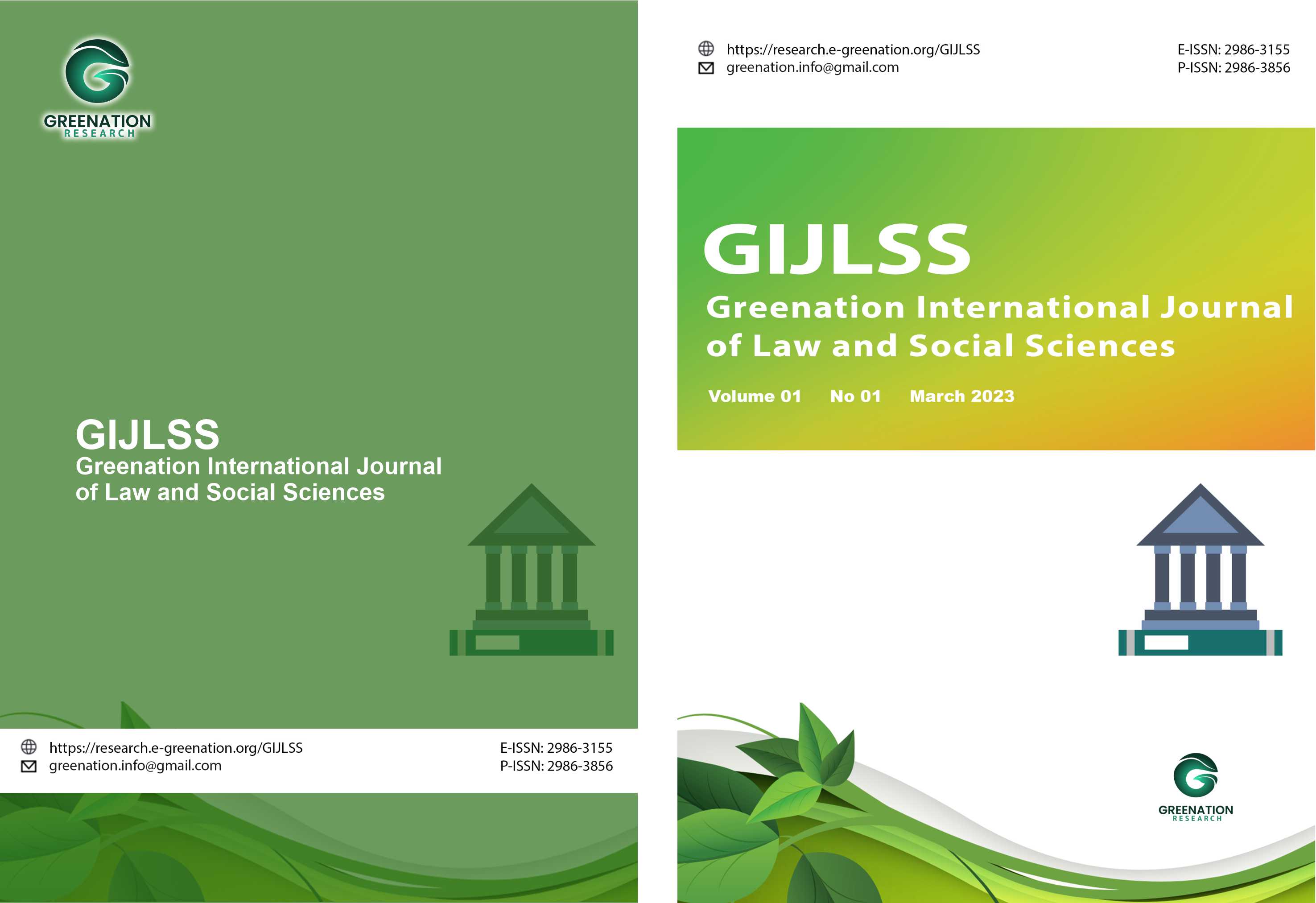Deconstructing Beauty Standards: a Case Study of Body Shape Representation in the Film “Imperfect”
DOI:
https://doi.org/10.38035/gijlss.v3i2.470Keywords:
Deconstruction, Beauty Standards, Body Shape, Imperfect Film, Jacques Derrida, Body Shaming.Abstract
This research aims to elucidate the standards of beauty presented in the film "Imperfect: Career, Love & Body Weight" through the lens of Jacques Derrida's deconstruction theoryl. The film addresses issues of body shaming and women's self-doubt regarding their body shapes, while simultaneously challenging conventional beauty norms that prioritize slim figures and fair skin. Employing a qualitative methodology, this study analyzes scenes, dialogues, visual symbols within the film, and audience reactions from online platforms. The analysis reveals that "Imperfect" effectively contests logocentrism in the construction of beauty by highlighting physical diversity and self-worth. Through the concepts of différance and binary oppositions such as beautiful/ugly or slim/overweight, the film deconstructs the instability of beauty's meaning and emphasizes the importance of self-acceptance. This film serves as a medium for social critique against rigid beauty standards and advocates for a more inclusive and humanistic representation of women. Keywords: Deconstruction, Beauty Standards, Body Shape, Imperfect Film, Jacques Derrida, Body Shaming.
References
Anakotta, E. (2020). Dekonstruksi Budaya Patriakhal pada Film Perempuan Berkalung Sorban. Jurnal Kajian Bahasa, Sastra Dan Pengajaran (KIBASP), 3(2), 261–275. https://doi.org/10.31539/kibasp.v3i2.1257
Anisa, A. R., & Winduwati, S. (2021). Pemaknaan Body Positivity dalam Film Imperfect Pada Kalangan Remaja di Jakarta. Koneksi, 5(2), 427. https://doi.org/10.24912/kn.v5i2.10421
Anugerah, A. S., Yoanita, D., & Aritonang, A. I. (2020). Penerimaan Penonton terhadap Konsep Self- Acceptance dalam film Imperfect Pendahuluan. E-Komunikasi, 8(2), 1–12.
Ardiansyah, S. S. (2022). Analisis Framing Pesan Sosial Pada Film Netflix “The Social Dilemma” [Universitas Muhammadiyah Jakarta]. http://repository.umj.ac.id/id/eprint/9368
Bado, S, Pd., M, Si, B. (2021). Model Pendekatan Kualitatif: Telaah Dalam Metode Penelitian Ilmiah. In T. Media (Ed.), Tahta Media Group (1st ed.). Tahta Media Group.
Chindy Pratiwi, L. (2024). Visualisasi Isu Body Positivity dalam Film Imperfect: Karir, Cinta & Timbangan. Institut Seni Indonesia Surakarta.
Diputra, R., & Nuraeni, Y. (2021). Analisis Semiotika dan Pesan Moral Pada Film Imperfect 2019 Karya Ernest Prakasa. Jurnal Purnama Berazam, 2(2), 111–122.
Meisabillah, B., Pujianti, N. A., Sabilla, N., Siswoyo, M., & Lestari, A. D. (2024). The Role of “Jeng Yah” In Gender Equality In The Cigarette Girl Series. Asian Journal of Social and Humanities, 2(7), 2024. https://ajosh.org/
Minah, N., & Kumari, F. (2021). Film Dangal Dalam Analisis Jacques Derrida. 20(2), 145–158. https://doi.org/10.18592/jiiu.v
Moleong, L. J. (2020). Pelaksanaan Reforma Agraria di Desa Sumberdanti Kecamtan Sukowono Kabupaten Jember (Berdasarkan Undang-Undang No. 5 Tahun 1960 Tentang Pokok-Pokok Agraria Dan Perpres No. 86 Tahun 2018 Tentang Reforma Agraria) (Issue 5) [Institut Agama Islam Negeri Jember]. https://doi.org/https://doi.org/10.35719/rch.v2i3.84
Nafsika, S. S., & Huda, A. S. (2021). Estetika?: Perspektif Semiotika dan Semantik pada film Salam dari Kepiting Selatan. IRAMA, 3(2), 7–13.
Nafsika, S. S., & Razan, A. P. (2021). Estetika?: Perspektif Semiotik dan Semantik Film Free Guy. ANDHARUPA: Jurnal Desain Komunikasi Visual & Multimedia, 3(01), 33–44. https://doi.org/10.33633/andharupa.v2i01.1075
Nuraini, S. A. (2024). Kajian Psikologi Sastra Dalam Film Imperfect?: Karier , Cinta. Prosiding Pijar?: Pedagogi Bahasa Dan Sastra Indonesia, 1, 164–169.
Putri Aldini, K. (2020). Pengaruh Body Image terhadap Kepuasan Tubuh Perempuan Pengaruh Body Image terhadap Kepuasan Tubuh Perempuan Kania Putri Aldini Program Studi Psikologi , Universitas Pembangunan Jaya , Tangerang Selatan , Indonesia [email protected]. May.
Siregar, M. (2019). Kritik Terhadap Teori Dekonstruksi Derrida. Journal of Urban Sociology, 2(1), 65. https://doi.org/10.30742/jus.v2i1.611
Suyanto, B. (2013). Filsafat Sosial. In B. Suyanto (Ed.), Aditya Media Publishing (1st ed.). Aditya Media Publishing.
Ugunawan, Yusup, E., & Ramdhani, M. (2021). Representasi Kepercayaan Diri Dalam Film “Imperfect: Karir, Cinta, & Timbangan” (Analisis Semiotika Roland Barthes Tentang Makna Percaya Diri Dalam Film “Imperfect: Karir, Cinta, & Timbangan”). 15(2), 25–32.
Vasanthan, R. (2023). Unveiling Conformity and Differentiation Through Derrida’S “Différance.” ShodhGyan-NU: Journal of Literature and Culture Studies, 1(1), 6–11. https://doi.org/10.29121/shodhgyan.v1.i1.2023.6
Wahyuni, N. P., & Nugroho, C. (2021). Konstruksi Tidak Percaya Diri Perempuan Dalam Film (Analisis Semiotika Roland Barthes Film Imperfect) Construction of Women With Lack of Confidence in A Film (Semiotic Analysis of Roland Barthes Film Imperfect). E-Proceeding of Management, 8(5), 6917–6931.
Widiyani, D. S., Rosanda, D. A., Cardella, T. F., Florensa, M. V. A., & Ningsih, M. T. A. S. (2021). Hubungan Perlakuan Body Shaming Dengan Citra Diri Mahasiswa [the Relationship Between Body Shaming Behavior and Students Self Image]. Nursing Current: Jurnal Keperawatan, 9(1), 67. https://doi.org/10.19166/nc.v9i1.3464
Downloads
Published
How to Cite
Issue
Section
License
Copyright (c) 2025 Aulia Sandra, Ahmad Khilmi; Khaerudin Imawan

This work is licensed under a Creative Commons Attribution 4.0 International License.
Copyright :
Authors who publish their manuscripts in this journal agree to the following conditions:
- Copyright in each article belongs to the author.
- The author acknowledges that the Greenation International Journal of Law and Social Sciences (GIJLSS) has the right to be the first to publish under a Creative Commons Attribution 4.0 International license (Attribution 4.0 International CC BY 4.0).
- Authors can submit articles separately, arrange the non-exclusive distribution of manuscripts that have been published in this journal to other versions (for example, sent to the author's institutional repository, publication in a book, etc.), by acknowledging that the manuscript has been published for the first time at GIJLSS.
























